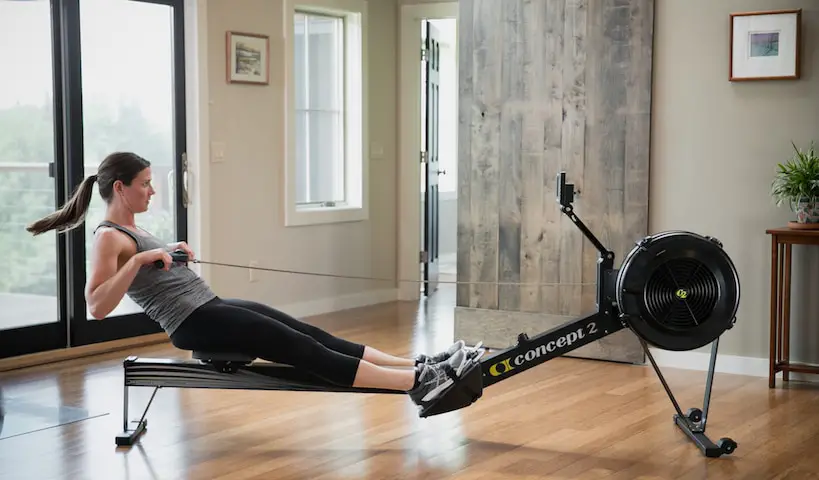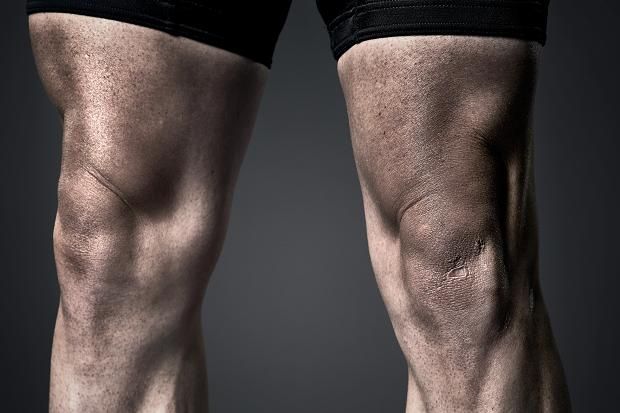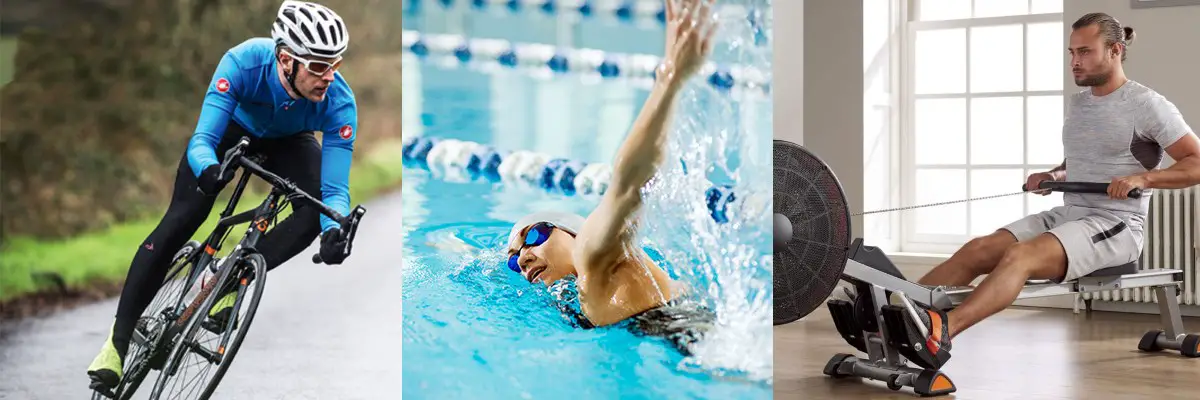Alternative 1 - Rowing

Before we even begin to explain the benefits of rowing, here’s a picture of Gerard Butler in peak condition during his role in the movie 300.

So why is rowing so effective?
There are very few exercises that target as many muscles in your body as rowing. It literally covers the full length of your muscular skeletal system.
In fact, I would say that most runners find rowing more difficult than running. I know I fall into this camp.
- Running – 820+ calories per hour
- Rowing 697+ Calories per hour
Ultimately, rowing might just be the best alternative running when you’re injured. You will burn a crazy amount of calories, your heart rate will go through the roof, and you can push yourself even harder than you would on a typical run.
Alternative 2 - Swimming
Good calorie burning potential – Swimming might not be quite as effective as running, but it’s still an excellent way to burn calories. The bullet points below reveal how many calories you can expect to burn when swimming for 60 minutes.
- Running: 820+ Calories Per Hour
- Slow Freestyle: 570+ Calories Per Hour
- Fast Freestyle: 820+ Calories Per Hour

Unlike long distance runners and cyclists, swimmers tend to have well built upper bodies. This is mainly because swimming (in particular freestyle and butterfly) makes you stronger. Unlike running, where your legs do most of the work, your arms and shoulders are the true engines here.
By adding regular swimming to your schedule, you can potentially increase your lung capacity. This can be an advantage when performing any form of cardio, running included.
Alternative 3 - Cycling
Like rowing and swimming, cycling is also a low impact form of cardiovascular exercise. This makes it an excellent choice for injured runners that need to avoid doing further damage.

You can burn loads of calories
While cycling might not burn as many calories as running, it’s still a great form of cardio with high calorie burning potential. The bullet points below show the difference between running and cycling in terms of burning calories.
- Running: 820+ Calories Per Hour
- Cycling: 656+ Calories Per Hour
You can do it indoors or outdoors
Most gyms are setup with stationary bikes, and you can also invest in a indoor cycle trainer, to help simulate outdoor cycling in the comfort of your own home.
There are few people on this planet who don’t experience a small amount of joy when riding a bike. You basically get a double shot of dopamine when you hop onto the saddle.
On runnersconnect, coach Jeff Gaudette points out that “79% of runners get injured at least once during the year.” The good news is that frequent cycling can help you avoid this fate.
Final Thoughts
Even though it’s super frustrating when you experience a running injury, there are ways to mitigate the damage and bounce back stronger than you were before.
The 3 methods outlined in this article can help you maintain your endurance fitness (and stay sane) during this challenging time in your life.
The best thing you can do at this point is to pick 1 of the 3 methods outlined above, and treat it with as much passion as your running career.
By keeping your fitness levels high, and giving yourself adequate time to recover from your injury, your transition back to the road will be so much smoother in the long run.

